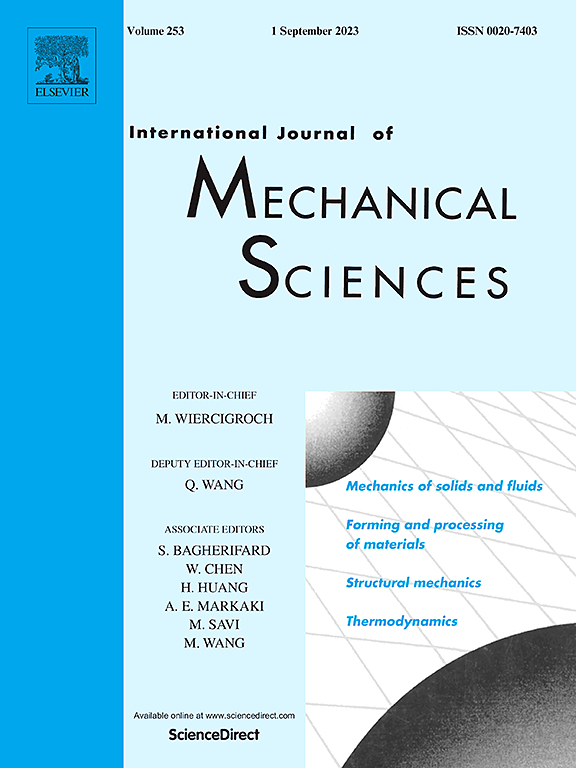Fatigue-creep design of transpiration cooled nickel gas turbine blades via low order aerothermal-stress and crystal plasticity finite element modelling
IF 7.1
1区 工程技术
Q1 ENGINEERING, MECHANICAL
International Journal of Mechanical Sciences
Pub Date : 2025-02-01
DOI:10.1016/j.ijmecsci.2025.109955
引用次数: 0
Abstract
Transpiration Cooling (TC) systems can substantially improve the fuel efficiency of jet engines by allowing them to run much hotter than current designs allow. However, TC systems require radically new designs where large cyclic thermomechanical stresses and creep-plastic deformation can limit the life of core components. This can only be mitigated through integrated design approaches which simultaneously consider the aerothermal and mechanical performance. We develop here a low order aerothermal-stress model (LOM) which combines first order coolant flow and fluid-solid convective-conductive heat transfer calculations with stress calculations in the solid. The LOM provides rapid answers to crucial design questions: how much cooling air and how many cooling holes are required in gas turbine blades for them to operate safely at a given turbine inlet (hot gas) temperature? The LOM also narrows the range of conditions under which Crystal Plasticity Finite Element (CPFE) simulations may be required for fatigue-creep life assessment at final design stages. Our answer to previous pessimistic views on the practical use of TC is that TC systems can actually work thanks to the threefold benefit of cooling holes in reducing metal temperatures, temperature gradients and effective thermal stresses. CPFE simulations confirm this new conclusion, encouraging the wider use of our hybrid design strategy in turbomachines, hypersonic technologies and fusion reactors as well as the take-up of TC systems to deliver durable hydrogen-fuelled turbines for Net Zero.

求助全文
约1分钟内获得全文
求助全文
来源期刊

International Journal of Mechanical Sciences
工程技术-工程:机械
CiteScore
12.80
自引率
17.80%
发文量
769
审稿时长
19 days
期刊介绍:
The International Journal of Mechanical Sciences (IJMS) serves as a global platform for the publication and dissemination of original research that contributes to a deeper scientific understanding of the fundamental disciplines within mechanical, civil, and material engineering.
The primary focus of IJMS is to showcase innovative and ground-breaking work that utilizes analytical and computational modeling techniques, such as Finite Element Method (FEM), Boundary Element Method (BEM), and mesh-free methods, among others. These modeling methods are applied to diverse fields including rigid-body mechanics (e.g., dynamics, vibration, stability), structural mechanics, metal forming, advanced materials (e.g., metals, composites, cellular, smart) behavior and applications, impact mechanics, strain localization, and other nonlinear effects (e.g., large deflections, plasticity, fracture).
Additionally, IJMS covers the realms of fluid mechanics (both external and internal flows), tribology, thermodynamics, and materials processing. These subjects collectively form the core of the journal's content.
In summary, IJMS provides a prestigious platform for researchers to present their original contributions, shedding light on analytical and computational modeling methods in various areas of mechanical engineering, as well as exploring the behavior and application of advanced materials, fluid mechanics, thermodynamics, and materials processing.
 求助内容:
求助内容: 应助结果提醒方式:
应助结果提醒方式:


